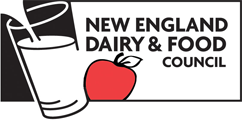“We are thrilled with the response we have gotten from kids and parents about this new breakfast initiative. Kids report being much more energized at school when they get proper nutrition at times that are sensitive to their respective needs.” – Principal Neal McIntyre, Flood Brook School.
Below, you’ll learn more about:
- Why schools are moving breakfast into the classroom.
- The Vermont Breakfast After the Bell Challenge.
- How your community’s school can get involved.
Schools are Moving Breakfast Into the Classroom
As much as we tell students to be themselves and not be afraid to stand out, kids want to blend in. This goes for school meals: Kids wants to eat what and where their friends are eating at school. Eating is a chance to be seen and socialize.
Parents know that getting kids to school on time is a challenge, let along arriving early to access breakfast in the school cafeteria. Cafeterias at some schools are inconveniently located. Students may choose socializing with friends over grabbing breakfast from the cafeteria.
Most importantly, there are kids that come from food insecure families. For them, breakfast at home isn’t an option.
Regardless of the reason, moving breakfast into the classroom fixes these issues. Breakfast in the class is:
- Convenient: A nutrient-rich, balanced meal awaits students as they arrive in class.
- Free: Schools that adopt this method provide food for all students, regardless of their family’s income.
- Sociable: Students eat at their desks, allowing time to talk with their friends.
- Healthful: School administrators report that when students eat breakfast, they’re better able to concentrate, earn better grades, visit the school nurse less often, and report fewer missed days due to being sick.
School breakfast becomes part of the school day. Rather than diverting time dedicated to learning, students eat at their desks while working quietly or completing homeroom tasks.
The Vermont Breakfast After the Bell Challenge
Now in its third round, the Vermont Breakfast After the Bell Challenge encourages school nutrition programs to move breakfast into the classroom and after the morning bell.
Once a school has registered for the challenge, the goal is to increase breakfast participation by a minimum of 20-percent. The school that earns the highest increase is awarded with a celebratory event.
The second-round results are in and ten schools rose to the challenge. In comparison to October 2015, the following schools saw percentage increases in breakfast participation:
- North Country Union Junior High School: 118%
- Highgate Elementary School: 117%
- Fisher Elementary School: 107%
- Green Street School: 94%
- Guilford Elementary School: 67%
- Flood Brook School: 64%
- Waterville Elementary School: 47%
- Canaan Schools: 32%
- Crossett Brook Middle School: 31%
Seeing a 642-percent increase, this round’s winning school was Missisquoi Valley Union Middle/High School in Highgate, VT.
“We are very proud of our breakfast program at Crossett Brook Middle School,” said Erika Dolan, Director of Food and Nutrition Services with Waterbury/Duxbury School District. “Our program was on the decline for the past few years. Now that we’ve changed the daily school schedule and introduced breakfast after the bell, we have seen an increase in our breakfast participation.”
How can my community’s school become involved?
For more information, check out Hunger Free Vermont’s Breakfast After the Bell page.
Updated February 28, 2017

